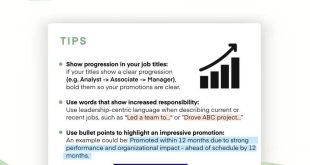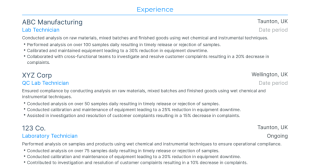How To Become Train Engineer – Train driver job is very important in Indian Railways. We can say that these are the pillars on which Indian Railways works. However, it should be noted that there is no direct recruitment of skilled train drivers in Indian Railways. Actually, Railways is recruiting candidates for Assistant Locomotive Driver. After a certain number of years of experience, the locomotive driver is promoted to assistant driver and then to locomotive driver. To become a train driver in India, candidates must be able to work long hours and act quickly. Read this post and we will discuss how to become a train driver in India.
Questions will be asked in Assamese, Bengali, English, Gujarati, Hindi, Kannada, Malayalam, Marathi, Punjabi, Tamil, Telugu, Urdu, Manipuri, Konkani.
How To Become Train Engineer
Note: Candidates belonging to reserved categories will be relaxed in the upper age limit as per rules.
What I Learned When I Drove A Vintage Steam Train
RRB Assistant Loco Pilot application form will be published online only. The complete process of submitting the application form is explained below.
Question 1: RRB Assistant Loco Pilot application form will appear in which mode and where?
Answer: RRB Assistant Loco Pilot application form is published online on the official website of various RRBs.
Answer: The upper age limit for becoming an assistant locomotive driver is 28 years. According to the rules, those starting from reserved categories are given relaxation in the upper age limit.
Sri Lanka’s Most Beautiful Train Journey
Question 3: Is the process of becoming an Indian Railway Driver applicable to Delhi Metro?
Skanda Sashti April 2023: Date and Time, Vrat Katha, Tithi, Bihar Holidays Discounts 2023: List of Public Holidays, Public Holidays and School Holidays 2023 List of Assam Holidays Diwali 2023 Date, Deepavali Story, Quotes and Gentleness Tija Earth Quotes 202. , Significance, quotes and wishes Losar 2023: Tibetan New Year, History of Losar Festival Kamada Ekadashi 2023: Sun, Vrat Katha, कमदा अकाददैवाददीव्ःृतत. आदुदार 2023 Date: Date, Theme (Closing the Expectation Gap), History, Significance, Okay Sarhul Festival 2023: सरहुल उच्वत्सव Jharkhand Day Hazrat Ali 2023 Birthday: Wishesotrew Member Qsurailroad Day, History, Celebration. For the energy system, often referred to as the “guide rail”, see Third Rail.
This article requires additional links to verify. Please help improve this article by adding links to trusted sources. Unsourced material may be objected to and removed. Find sources: Rail “Conductor” – News · Newspapers · Books · Reader · JSTOR (March 2022) (Learn how and where to delete this sample message)
A conductor (North American glish) or guard (Commonwealth glish) is a member of the train crew responsible for operational and safety duties that do not involve the actual operation of the train/locomotive. The title of conductor is most common in railroad jobs in North America, but the role is common throughout the world in a variety of jobs. In commonwealth, a conductor is also known as a guard or train attendant.
How To Become A Train Conductor: 12 Steps (with Pictures)
Some rapid transit systems employ drivers to make announcements and operate and close doors, otherwise operated by engineers. The conductor often stays in the middle of the train, preferring the platform. Although advances in automation have allowed many transit systems to use one-person train operations (OPTO), some, such as the New York City Subway, Toronto Transit Commission, and Sydney Trains, still use conductors.
In North America, a Conductor controls a freight, passenger, or other type of train and directly supervises the train crew, which may include brakemen, flagmen, ticket collectors, assistant conductors, and on-board service personnel. train movement. The engineer (driver) takes direction from the conductor. The loader (station master) and other mine workers (fireman, pilot engineer) are jointly responsible for the safe and efficient operation of the train, compliance with railway rules and regulations. At some railroads, union contracts require conductors to trade.
Passenger trains may employ one or more brakemen/assistant conductors to assist the driver and engineer in moving the train safely and quickly, sharing the workload and taking on assigned responsibilities. More than one crew, each with its own brakeman/assistant driver, may be assigned if the train crew’s route or length of duty exceeds one shift or conflicts with a statutory or contractual limitation on the number of working hours. On passenger trains, members of the on-board service staff are usually on duty during tire travel, including scheduled meal and sleep breaks.
Almost from the beginning of the North American railroad, the conductor of freight trains sat in the cab along with the rear flagman and the rear brakeman and performed his duties from there. Advances in technology and pressure to reduce operating costs made the caboose redundant and in many cases they were eliminated. This moved the conductor from the rear of the train to the locomotive (or locomotives) at the front of the train. In most cases, the same conditions apply to members of the train crew, such as brake master, flagman, etc.
Railway Driver Job Qualification To Become An Indian Railway Train Driver
Today, most railroad freight trains have two men: an engineer and a driver. Rail companies continue to cut operating and labor costs and threaten to eliminate the second meter. He rationalizes that since railwaymen are qualified as engineer conductors, they can perform conductor duties with ease. In fact, on most railroads, cleaners start out as brakemen, become conductors, and eventually become cleaners. Some railroads are already using this strategy, notably Montana Rail Link, which works with both the engineer and the driver. However, most railroads are contractually obligated to hire brakemen/assistant conductors other than engineers through crews through agreements negotiated with the major railroad unions, primarily the United Transportation Union (UTU). Therefore, the railroads and unions had to negotiate a new agreement to eliminate the conductor position. If the railroads were successful, already trained and certified conductors could theoretically work as engineers. Those who have not yet qualified as engineers should be trained as engineers when positions become available. Others may take other positions or lose their jobs. The original engineers’ union, the Brotherhood of Locomotive Builders, did not support the move, believing it dangerous to require its members to operate trains alone.
In the late 1990s, remote-controlled locomotives became popular on North American railroads for switching stations. This system allows the driver to directly control the locomotive(s) via a wireless remote control device rather than radio commands from an engineer in the cab. Some Class I rail yards use RCO packages for their conductors, while others do not, depending on the size and type of yard. Class I railroads train drivers to use RCO packages, with classroom and hands-on training culminating in on-the-job training and RCO operator certification. Currently, Class I railroads such as Norfolk Southern require RCO-trained conductors to work only on work boards (yards where RCO switching is used) that perform RCO operations. This additional training and payment to conductors ensures that the company provides maximum value for its investment.
Because there is no specific federal requirement for two-person train crews in the United States, the Utah Transit Authority originally planned for FrontRunner to be operated by a single operator and revenue collected through a toll system. Before operations began, FRA required FrontRunner to hire a second crew member for each train to assist with emergency evacuation, handicap access and other safety-critical situations. FrontRunner classified this job as a train driver, focusing on customer service rather than rail operations. Some other services, such as Amtrak’s Downeaster, also employ train attendants (paid or volunteer) to perform non-repetitive customer service duties for the conductor’s assistant.
All Massachusetts Bay Transportation Agency heavy rail trains are operated by a two-man crew consisting of an engine and a conductor. The conductor is located in the cabin of the second last car of the train. When the train arrives at the station, the conductor uses the cabin controls to open the doors. For this purpose, there are two controls on both sides of the cabin. There are two door zones: one set of controls controls the doors on the conductor car and the doors at the front of the car, and the other controls the rear doors of the conductor car. After the passengers have finished boarding or disembarking, the conductor looks forward and closes the door in front of the cabin. This process is repeated for the doors at the rear of the cabin. Door bells are used to notify passengers that the doors are closing.
Alfa X: The Unreal Science Of Japan’s 400kph Bullet Trains Explained
The Metropolitan Transportation Authority (New York City) transit system operates trains with two-person crews of drivers and conductors. The conductor sits in the middle of the train and is responsible for opening and closing the doors. When the train arrives at the station, the conductor checks the direction of the train by observing the black and white “zebra mark” on the platform.
Equipped
How to become engineer, how to become software engineer, how to become audio engineer, how to become an engineer, how to become it engineer, how to become an train engineer, how to become data engineer, become a train engineer, how to become network engineer, how to become cloud engineer, how to become gas engineer, how to become mechanical engineer



